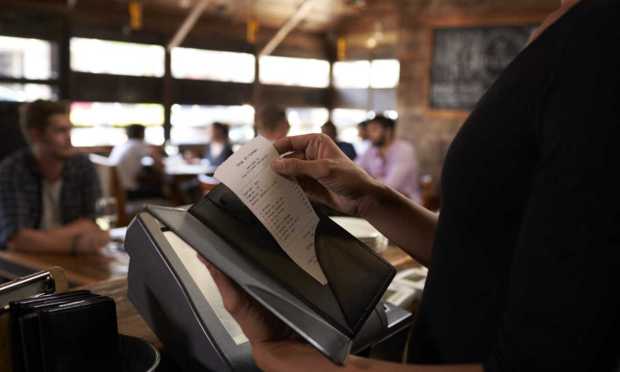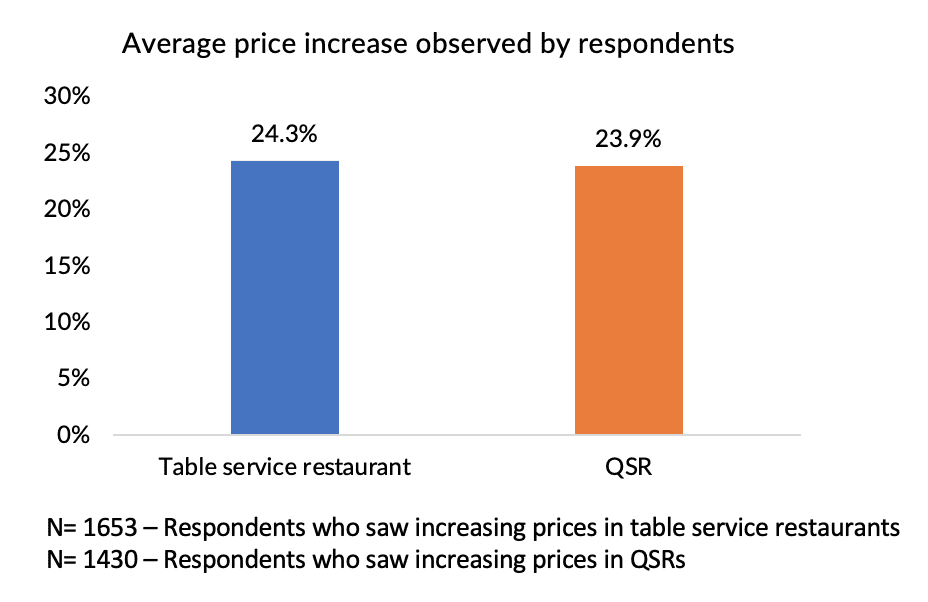Restaurants’ Efforts to Absorb Inflation Go Unnoticed by Consumers

PYMNTS research reveals that restaurants’ moves to absorb food price increases are escaping diners’ notice.
Amid inflation, restaurants have been keeping price increases low relative to their grocery counterparts. Research from the United States Bureau of Labor Statistics (BLS) Consumer Price Index (CPI) releasedTuesday (Feb. 14) reveals that restaurants continue to absorb a greater share of food price increases than grocers. The findings revealed that, while consumer food prices increased 10.1% year over year in January overall, grocery prices rose 11.3% while restaurant prices only grew 8.2%.
Yet, while restaurants may be continuing to absorb more of the increases in food prices than grocers, their efforts are going unnoticed by consumers. In fact, their customers continue to believe that restaurant price increases actually exceed those seen at the grocery store.
For “The 2022 Restaurant Digital Divide: Restaurant Customers React To Rising Costs, Declining Service,” PYMNTS surveyed a census-balanced panel of more than 2,300 U.S. restaurant customers in November.
Supplemental research for the study revealed that consumers see restaurant prices as having increased more than three times the BLS-measured rate at the time of the survey. On average, the price increases observed by consumers amount to 24%, both for full-service restaurants (FSRs) and for quick-service restaurants (QSRs).

Consumers also overestimate the rate of grocery inflation, but not to the same extent. Research from the January edition of PYMNTS’ Consumer Inflation Sentiment study “Consumer Inflation Sentiment: Perception Is Reality,” for which PYMNTS surveyed more than 2,100 U.S. adults in December, revealed that consumers on average see grocery prices as having risen 22%, twice the BLS-measured increase at the time.
Consequently, many consumers are shifting to eating more of their meals at home. For instance, the “Restaurant Customers React To Rising Costs, Declining Service” study found that anywhere from 67% to 88% of diners, depending on generation, report having made changes to their restaurant spending in response to inflation. The most popular change cited was purchasing from restaurants less often, followed by opting for restaurants with lower prices
Even restaurants known for their value offerings are seeing consumers trade down to grocery options.
QSR giant McDonald’s, for instance, is seeing smaller orders and a trade-down to grocery. The brand noted on a recent call with discussing its fourth-quarter 2022 financial results that, while it benefits from a widespread perception of affordability, it is not immune to consumers’ inflation-related behavioral changes.
“There is a little bit of a decrease in units per transaction that we’re seeing. We’re seeing a little bit of trade-down,” CEO Chris Kempczinski said on the call. “[But] overall, the consumer, whether it’s in Europe or the U.S., is actually holding up better than [I] would have expected a year ago or six months ago.”
Moreover, restaurants are being hit by something of a one-two punch, as their efforts to absorb price increases result in compromises on their customer service, and these cutbacks are noticed by consumers. The Digital Divide study found that 27% of diners have noticed lower quality of service, and half have seen restaurants cutting hours or closing dining rooms.
Nomie Hamid, founder and CEO of digital food hall company Virtual X Kitchen, noted in an interview with PYMNTS’ Karen Webster as part of our SMB TV series that the “fear factor” of losing customers is keeping independent restaurants from implementing the price increases they need to give them room in the budget to keep the restaurant staffed.
“I have been to numerous mom-and-pop restaurants, and I love going to them and supporting them, and when I look at their pricing, I am just amazed at how inexpensive it is,” Hamid said. “But then I see that they’re working on very extreme skeletal shifts, where they have only two or three people working … where they could use other bodies. But why aren’t the other bodies there?”
